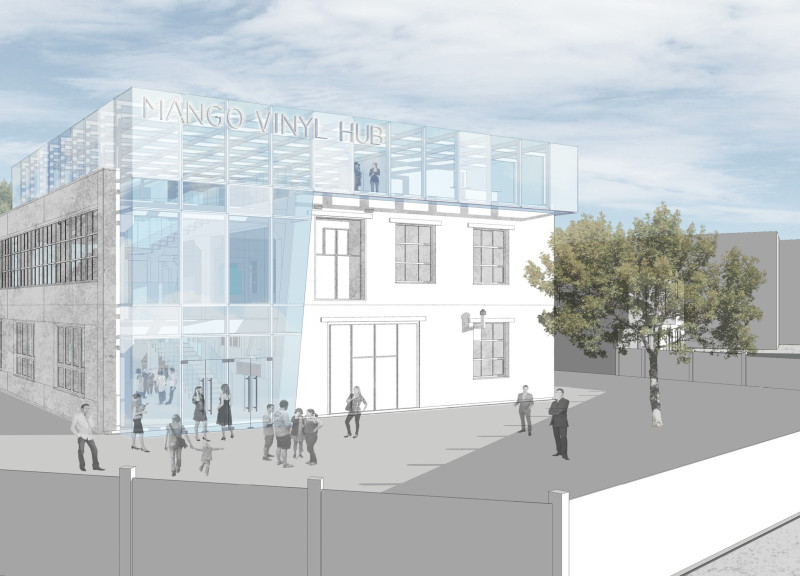5 key facts about this project
At its core, the Cesis Art Village functions as a multifunctional space that accommodates a range of activities, including studios, workshops, performance spaces, and recreational areas. This cohesive design allows various artistic disciplines to coexist and interact, fostering a sense of community and encouraging public participation. The layout is designed to facilitate movement and exchange among visitors, artists, and local residents, thereby enhancing the social fabric of the area.
One of the distinctive aspects of the project is its architectural design, which incorporates both contemporary and traditional elements. The facade of the Mango Vinyl Hub features a dual system of glass and concrete, creating an inviting presence that symbolizes transparency and accessibility. This building serves as the centerpiece of the art village, drawing visitors with its open and luminous design. The strategic placement of glass allows natural light to permeate the interior spaces, contributing to a warm and welcoming atmosphere.
The coworking space within the village promotes collaboration and creativity by providing flexible zones equipped for various uses. Designed with functionality in mind, it includes shared offices, studios, and communal areas, all crafted from materials such as timber and acoustic panels. These elements enhance both the aesthetic and acoustic comfort, making it conducive for productive work.
An additional significant feature of the project is the boutique hotel, which occupies the second floor and introduces a unique folding facade system. This design not only offers dynamic views but also emphasizes the contemporary aesthetic while promoting practical aspects like environmental efficiency. Such innovative design approaches reflect a forward-thinking perspective and a commitment to sustainability.
The Vinyl Café and Store enhance the project's social dynamics by merging hospitality with artistic collaboration. Its design incorporates organic forms and materials that create a cozy and inviting environment, making it an ideal setting for exhibitions and performances. The use of recycled materials in the café's furnishings speaks to an environmentally conscious ethos that resonates throughout the village.
Overall, the Cesis Art Village stands out for its unique blend of multiple functions, creative spaces, and a strong connection to local culture. Each component is thoughtfully designed to foster interaction among various groups, bridging gaps between artists, locals, and visitors. The project is not just about architecture; it represents a commitment to community engagement and cultural vitality.
Readers are encouraged to explore the architectural plans, architectural sections, and overall architectural designs of the Cesis Art Village to gain deeper insights into its innovative concepts. The architectural ideas presented within this project exemplify a thoughtful response to the needs of a contemporary community, making it a noteworthy example of modern architectural practice.


























